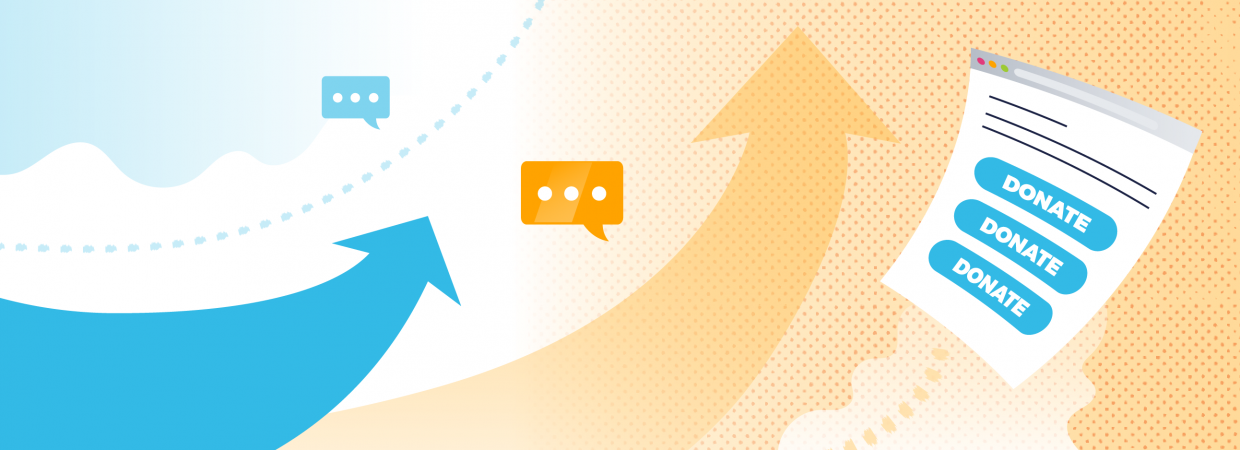When your campaign or cause is in the spotlight, you need to be ready to help people take action! 2020 has been a year of firsts for many candidates and organizations, and it’s during these unexpected moments that small-dollar donors want a clear path to invest in your work. This means rapid response is one of the most important tools in your toolkit as a fundraiser.
What is rapid response?
Rapid response is a plan you can use to quickly and strategically respond to an event that affects your constituents or cause. Those events can be difficult or joyful! Throughout the course of a campaign or an organizing drive, urgent moments can include being mentioned in the news, an important piece of legislation being passed, a local natural disaster, or a national event impacting your community.
An effective rapid response fundraising strategy is prepared ahead of time, and not only clarifies your messaging, but provides ways for supporters to engage with you! Before creating a plan, ask yourself these three questions:
1. What are your goals?
Defining your goals will help you identify the moments that require a response! What is your organization or campaign fighting for?
2. What moments would you respond to?
To identify potential rapid response moments, think about how your strategic goals intersect with the issue areas or values that drive your campaign or organization. Be thoughtful: Don’t use another group’s moment for your own gain, and remember that digital fundraising is about building authentic relationships. Supporters will not feel connected to an issue that you’ve never spoken about before!
3. What is the capacity of your team and your tools?
You need to be ready to act at a moment’s notice, so having all of the necessary tools ready to go is crucial for a successful rapid response program. These can include your contribution form, the mass mailer your email program uses, your CRM, and your social media accounts. And it is equally important to have staff that are trained on how to use these tools quickly and effectively!
Making your plan
Once you’ve reflected on what rapid response means for your campaign or cause, you’re ready to make a plan!
1. Set expectations
Discuss the goals, big moments, and tools you’ve brainstormed with your team, and agree on your rapid response moments. Remember that rapid response can be for good things, like a surprise endorsement or celebrity shoutout! Once your team is aligned, assign rapid response roles so individual expectations are clear ahead of time.
2. Create a checklist
When things get busy, having a written plan will keep everyone on the same page and help prevent mistakes. When a big moment arises, what are your immediate next steps? If you’re running a campaign, the first step might be getting a statement from your candidate to the press. The second could be writing a fundraising email based on that statement, then getting verbal sign off from the relevant stakeholders before sending it to supporters.
3. Develop a sign off chain
In order to act quickly, it won’t be possible for every single person in your organization to give edits on collateral. Make sure folks across the organization are aware that you have a rapid response plan, but keep the sign off chain as small as possible to cut down on time. You can work off of your current sign off chain: How do you get a fundraising email or tweet out into the world now?
4. Prepare for email fundraising
During a rapid response moment, email is one of your most powerful tools. It enables you to meet people at home or on the go with all of the information they need to get involved!
Decide your tone and emotion before you start writing your email. Is this a positive or negative rapid response situation for your organization? Will your supporters feel angry or hopeful when they learn what is happening? If you know a rapid response moment might be coming, like a relevant Supreme Court decision, prep both the “win” and “lose” versions of your email ahead of time. In addition to following traditional fundraising email principles, think about how you might have to educate supporters during rapid response. Will you be breaking news to your email list? If so, make sure to quickly set the scene. Even if this is huge news, tell supporters why they need to care!
Lastly, think critically about what kind of ask to make. One-time donation asks are good for bringing people into your cause, but rapid response offers you a unique moment where all eyes are on you. If you can get folks to sign up for recurring contributions, you can extend that engagement long beyond the initial headlines!
5. Remember to follow up!
These big moments are a time when new people want to get involved in your mission, so after rapid response it is very likely that you will have some new supporters. How do you keep these new folks engaged? It’s all about the follow up! Always send a thank you email for each contribution, and send email updates about new developments or successes. You can even invite new supporters to get to know your work better through a virtual event!
Once the moment has ended, even if just for the time being, share what you were able to do, or will be able to do, thanks to the support of your small-dollar donors. Once you’ve reported back to your supporters, you can even ask folks who gave a one-time contribution to make a recurring donation to sustain your work for the long haul.
When a rapid response moment arrives, it can be an emotional or even overwhelming time. Strategizing about your priorities and creating a plan ahead of time will make go-time easier and ensure your small-dollar donors are front and center in any response!



